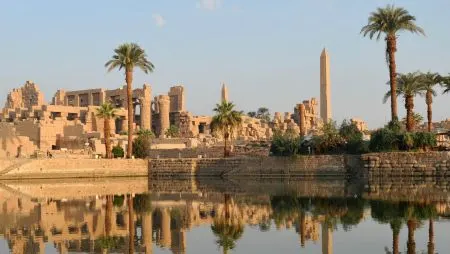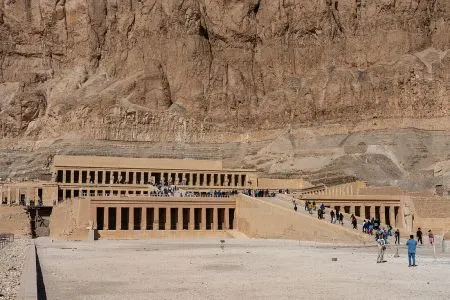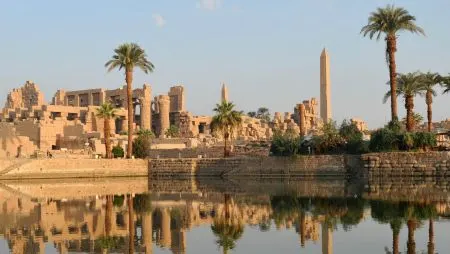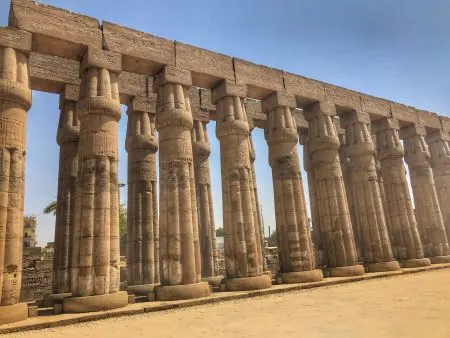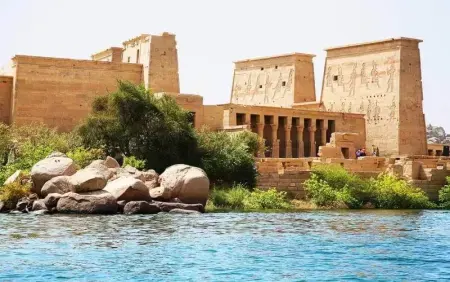One of the most fascinating Luxor tourist attractions is Luxor Museum, which is one of the most beautiful and well-curated experiences not only in Egypt but also worldwide. This museum is located between Luxor Temple and Karnak Temple on the east bank of the Nile, and it combines history, art, and peace perfectly.
It is smaller than the Egyptian Museum in Cairo but much more sophisticated and offers the visitors a small and well-organized tour of the glory of the ancient city of Thebes—the city that was once the heart of the New Kingdom of Egypt.
The Luxor Museum should be included in the itinerary whether you are on a one-day in Luxor, a leisurely sightseeing trip around Egypt, or an extended vacation in Upper Egypt, since it is the artistic and royal legacy of Luxor that the museum showcases.
The Story of the Luxor Museum
The Luxor Museum, which was opened in 1975, aimed at both preserving and presenting the most important discoveries from the Theban area. Luxor Museum, in contrast to larger museums packed with artifacts, focuses on quality rather than quantity, which means every single exhibit gets enough time to "breathe" and "speak" its own story in full.
The museum's architecture is a masterpiece. The combination of modern architecture and soft white lighting highlights every detailed carving, the most polished statue, and the smallest royal relic. Visitors are allowed to go through the galleries as if they were walking along the timeline of the Egyptian civilization—from the Old Kingdom to the new Kingdom pharaohs' rising.
This visit is not merely another museum; it is an emotional journey through the street of time in Egyptian history. The visit is calm and deep and is therefore a major attraction among all Luxor sightseeing tours.
What to See Inside the Luxor Museum
The Luxor Museum is home to a wonderful but also manageable collection, which is arranged in a chronological and thematic way. The following are the most popular exhibits of the museum:
The Statue of Amenhotep III and the Crocodile God Sobek – A magnificent statue of Amenhotep III and the Crocodile God Sobek, an embodiment of royal power and divine protection.
Artifacts from Tutankhamun’s Tomb—Jewelry, ceremonial items, and everyday tools—are amongst the items found in his burial site on the Luxor West Bank.
Mummies of the New Kingdom Royalty—Among the various royal mummies found in the Deir el-Bahari cache that the museum holds, one can trace down the connection with Egypt's legendary kings and queens.
The Wall Reliefs and Stelae—These splendid carvings depict the rituals and offerings to the gods, thus allowing the visitors to unravel the symbolic language of ancient Egypt.
Pharaohs' Weapons and Tools – Unique bronze and stone weapons that reflect Egypt's artillery and craftsmanship might not be equal.
Every single item in the Luxor Museum gives background information on the nearby places, such as the Valley of the Kings, Temple of Hatshepsut, and Karnak Temple. It is an ideal partner to day trips in Luxor where the history is vividly alive even beyond the ruins.
Tips for Visiting Luxor Museum
To help you get the best out of your stay, we present some useful tips:
Opening Hours: Open every day, normally from 9 AM to 9 PM, although this might change. The lighting during the evening visits is beautiful and there are not many people around.
Tickets: Can be purchased at the entrance or included in the organized Luxor sightseeing tours.
Photography: Allowed in most places, but no flash.
Best Time to Visit: If you combine your visit with an afternoon or evening Luxor day tour, you can have a peaceful experience after visiting the temples in the morning.
Duration: Set aside at least an hour for your entire visit, even more if you like to read labels at every exhibit and enjoy the atmosphere.
Combine Luxor Museum with Luxor Attractions
For a complete Luxor sightseeing experience, it is advised that you combine the museum with a tour of the other surrounding attractions:
Karnak Temple Complex—A couple of minutes' drive north will take you to this outstanding place with gigantic columns and altars granted to Amun-Ra.
Luxor Temple—A nighttime visit is breathtaking when the temple is illuminated.
Luxor Corniche (Nile Walk)—End your day with a sunset stroll along the Nile or a felucca ride.
Such combinations make for one of the best day trips from Luxor, blending art, architecture, and riverfront relaxation in a single itinerary.
Why Luxor Museum Should Be Part of Every Luxor Day Tour
Unlike many ancient sites that rely on imagination, the Luxor Museum brings tangible proof of Egypt’s brilliance into view. You’ll see the same treasures once buried in the Valley of the Kings—but restored, preserved, and explained in a way that deepens appreciation for what you’ve already seen on-site.
Anyone who takes part in Egypt tours or day trips in Luxor should definitely consider the museum as a link between temples, tombs, and the stories that shaped ancient Thebes. Besides a visit, it’s a direct connection to the timeless past of Egypt.
Luxor Museum is not simply the other attraction of your Luxor trip but rather a unit of marvelous narration and conservation. It embodies the entirety of Thebes, offering the visitors a glimpse of the creativity, religion, and elegance that were the traits of ancient Egypt.
No matter if you are discovering Luxor in one day or if you are spending several nights, it is a must to have this cultural gem in your plan. You will depart with a more profound comprehension of the legacy of Egypt and impressions that last even when your trip comes to an end.

